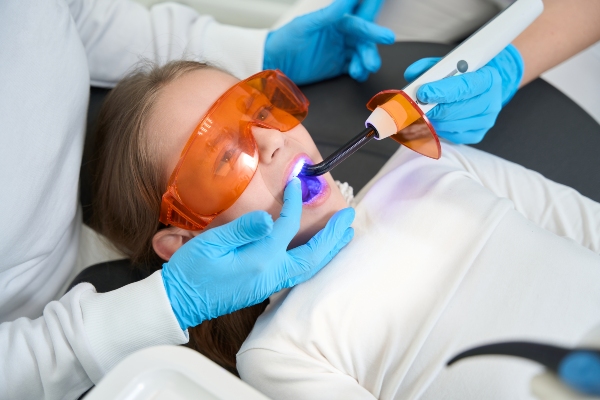Treatment Options for Baby Bottle Decay [Kids Dentistry]

Baby bottle tooth decay is a common pediatric dental issue that professionals in the kids dentistry specialty see often. This type of tooth decay, which many also refer to as early childhood caries, is relatively common among children under the age of five. However, it is also easily prevented through awareness and proper oral hygiene. That said, when a child does begin to show symptoms of caries, early treatment is necessary to prevent the need for more extensive and invasive treatment later in the child's life.
Common treatments for baby bottle tooth decay in kids dentistry
Treatment for early childhood caries varies based on the severity of the condition and the patient's age. In an ideal situation, a pediatric dentist identifies signs of decay early on and can utilize simple fluoride treatments to remineralize the enamel. A dentist may use one of two treatment methods. The first involves using fluoride during a typical cleaning appointment. The second involves coating the teeth in a fluoride varnish, which lasts for about three months. Both treatment methods help to slow or stop decay and, when decay is just starting, may even reverse some of the damage. If a child is particularly susceptible to caries, the dentist may recommend fluoride supplements.
When decay is severe, a pediatric dentist may recommend treatments more commonly used on adults. The American Academy of Pediatric Dentistry recommends dentists apply stainless steel crowns because they are durable and require little maintenance. Depending on a child's age and maturity level, a kid's dentist may suggest general anesthesia or sedation.
In addition to treating the decay, a kid's dentist is likely to make suggestions for changes to the child's diet:
- Limit fruit juices and acidic liquids
- Substitute milk, formula or juice with water in a child's bottle
- Brush and floss the child's teeth once teeth have erupted
- Schedule regular dental visits after a child turns one
These measures, in combination with fluoride treatments, should be sufficient in stopping the spread of decay. However, if a child's teeth have brown or black spots, the gums are bleeding or swollen or the child has a fever and bad breath, more extensive restoration treatments are likely necessary.
The importance of treating baby bottle tooth decay
Many parents assume that early childhood caries is not an issue, as baby teeth are going to fall out anyway. This assumption can lead to extensive and costly repairs later on in the child's life. Though it is true that baby teeth begin fall out at around age five or six, the permanent teeth are present in the jawbone early on in life. Premature loss of baby teeth may prompt the mature teeth to grow in too soon, which can lead to alignment and spacing issues. Moreover, if the decay is extensive, it may extend beyond the root of the baby tooth and to the roots of the adult tooth beneath it.
Conclusion
Treating and preventing baby bottle tooth decay is an essential aspect of kids dentistry. If your child shows signs of early childhood caries, contact your pediatric dentist to discuss possible treatment options.
Request an appointment here: https://www.grandparkwaypediatricdental.com or call Grand Parkway Pediatric Dental at (832) 579-0960 for an appointment in our Richmond office.
Check out what others are saying about our services on Yelp: Read our Yelp reviews.
Recent Posts
Dental fillings for kids restore the smile for years to come. Proper aftercare and consistent oral hygiene help to ensure your child gets the most out of their fillings. Thankfully, caring for these restorations is simple and straightforward, particularly with the help of a pediatric dentist.A dental filling is a dental restoration that “fills” cavities…
Children's tooth care starts long before the first toothache, and thoughtful care helps prevent sensitivity and protect growing smiles. When toothaches or sensitivity appear, they cause worry for children and parents, but clear guidance and prompt care keep problems from escalating.Toothaches signal that something in the mouth needs attention. In children, discomfort may show up…
Dental fillings for kids provide many advantages. It is natural for parents to ensure their children’s comfort. Fillings can improve a decayed tooth’s function and appearance. It can also keep more dental decay at bay. Here are the details on how dental fillings for kids can prevent dental decay from worsening.All parents want their children…
Dental fillings for kids are crucial in preventing many dental issues. Baby teeth can develop cavities. Correcting this problem is important for developing permanent teeth. Here are the details on how preventive dentistry uses dental fillings for kids.Research shows that many school-age kids suffer from cavities. This disease is common even if it is preventable.…


